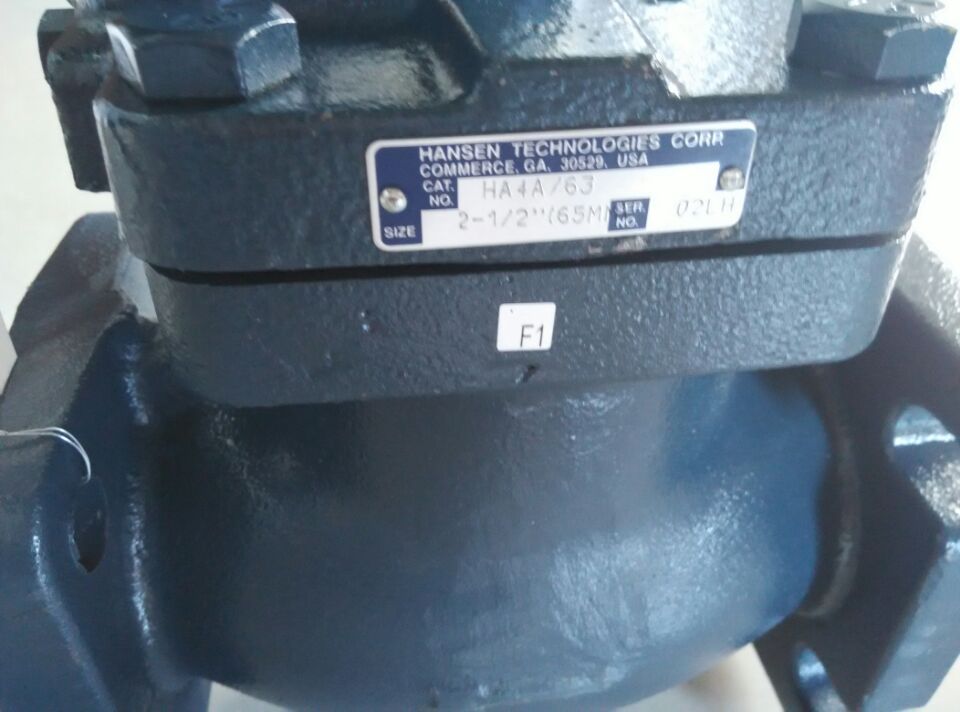HA4AM Electric Motor Compensated Regulator

INTRODUCTION This motor/cam compensated regulator is a configuration of the Hansen HA4A modular pressure regulator. The motor varies the pressure setting of the regulator when it receives a signal from an appropriate controller, such as a thermostat or PLC. This regulator is commonly used for situations requiring precision air temperature control, such as fruit cold storage, or precision liquid chiller control. It is also commonly used where the refrigeration load varies abruptly, such as meat packing process areas.
ADVANTAGES Adjusts for varying load conditions. Welded bracket motor mount provides secure, stable mounting. Quad ring seal prevents moisture leakage into the stem area, eliminating the possibility of freezing. Quad ring eliminates the packing nut, preventing the possibility of over-tightening the nut. Interchangeable and direct replacement for Parker R/S A4AM Modutrol valves.
ADDITIONAL FEATURES Available in two control ranges—Range A 0 psig/ 0 bar to 150 psig/10 bar and Range V 20"/–0.7 bar to 130 psig/9 bar. Two motors to choose from—PENN* (standard) and HONEYWELL (optional). Both low-rise (standard) and high-rise (optional) cams are available. Supplied with a dual-pilot-ready bonnet. Available accessories: Electric proportional thermostat controllers. Electronic PID controllers with sensor. 24V transformers.
CONSTRUCTION The motor mount on the Hansen electric motor compensated regulator is of superior design. Unlike designs with “l(fā)egs,” the HA4AM has a solid, welded bracket motor mount. This design provides a sturdy and stable base that will not flex or warp with motor torque or temperature changes. The control module stem is a quad-ring-seal design. The quad ring is more flexible and durable over time than stem packing or O-rings, which means continuous protection against condensation inside the control module. If present, this condensation may freeze, making the regulator inoperative. In addition, the stainless steel nut holding the motor bracket to the control module is machined in a way to help direct any condensation away from the control module stem, preventing possible freezing problems. The control module shaft also has a roller bearing that rides on the cam, allowing smooth operation with little wear over time.
OPERATION The regulator inlet pressure setting changes as the motor receives a signal from a controller, such as a thermostat or PLC. The rotation of the motor is transmitted through a cam to the control module stem, and then to the control module range spring connected to the top of the control module diaphragm. With an increase in room temperature, for example, the motor moves the valve stem farther out of the control module, decreasing the pressure on the control module diaphragm. This, in turn, increases the opening of the main valve seat, decreasing the temperature by lowering the pressure setting. With a decrease in room temperature, the action is reversed, increasing the temperature by increasing the pressure setting.


